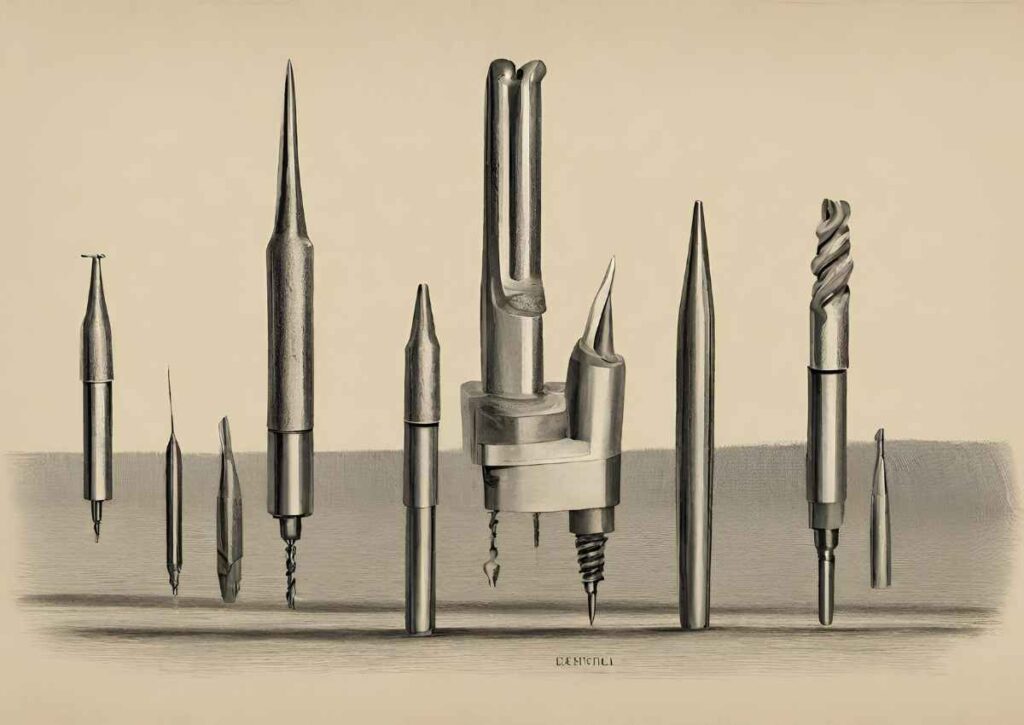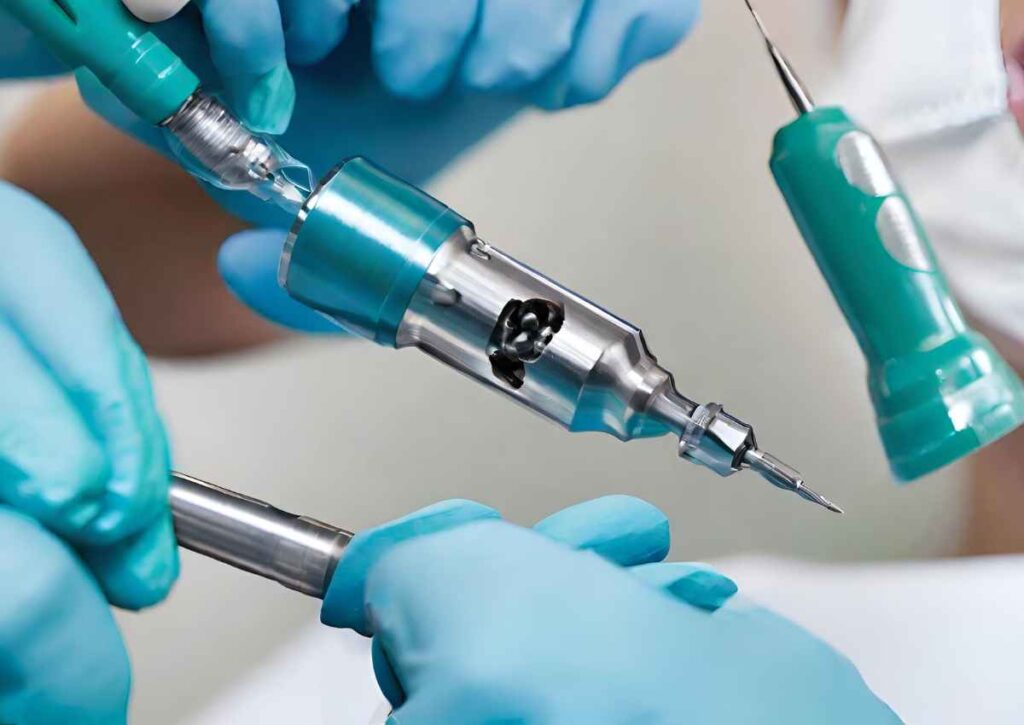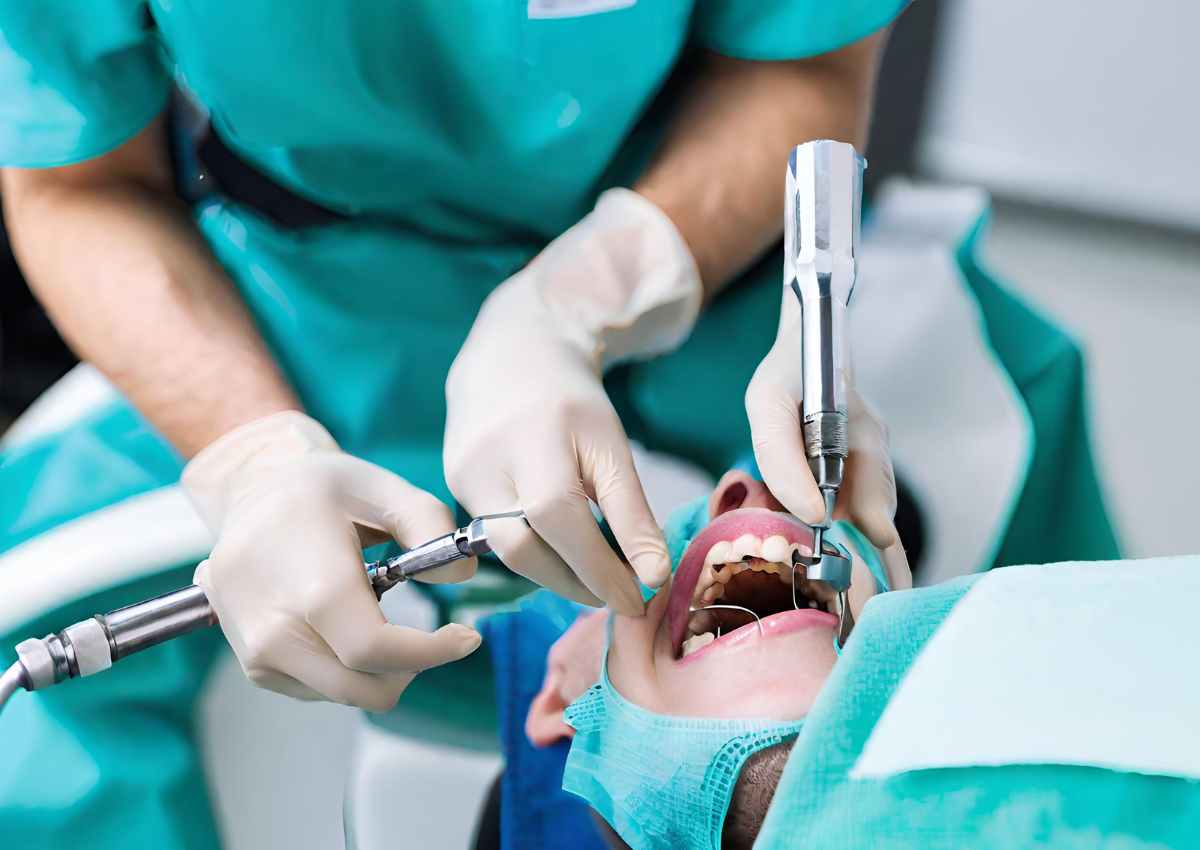When you visit the dentist, one of the most common sights is the dental drill, also called a dental handpiece.
It’s a small, handheld tool that dentists use for various jobs in your mouth, like fixing cavities, polishing fillings, making your teeth look better, and adjusting fake teeth.
Dental care has undergone remarkable advancements over the years, with innovations transforming the way dentists approach common procedures.
At the heart of many of these procedures lies a critical tool: the dental drill, also known as a dental drilling handpiece.
This hand-held mechanical instrument is a cornerstone in various dental procedures, including removing decay, polishing fillings, performing cosmetic dentistry, and adjusting prostheses.
Let’s delve into the intricacies of this indispensable tool and understand its significance in modern dentistry.
What’s inside a dental drill?
Imagine a tiny machine with lots of little parts inside. That’s what a dental drill is like. These parts work together to make the drill spin and do its job.
At the end of the drill is what we call a dental burr, which is like a tiny, sharp tool that dentists use to do their work.
These burrs are usually made of very strong materials like tungsten carbide or diamond to make sure they last a long time and can do their job well.
Different Types for Different Jobs

Not all dental drills are the same. Some are super fast, spinning at incredible speeds of up to 180,000 times per minute! These are called high-speed handpieces.
They’re like the Ferraris of dental drills because they’re super quick. They’re perfect for removing decay from your teeth or shaping dental materials precisely.
Then there are electric ones, which work a bit differently. They may not be as fast as the high-speed ones, but they’re still powerful.
These ones can also go really fast, over 180,000 times per minute, thanks to the special gear inside.
But wait, there’s more! Some dental drills are slow, working at a much more relaxed pace. These are great for jobs that need a gentle touch, like polishing your teeth or making tiny adjustments.
How do they work?
Inside these drills, there’s a special part called a turbine that helps them spin. This turbine is powered by compressed air, which is like really squished air.
When the air rushes through the drill, it makes the turbine spin, just like how the wind spins a windmill.
There are also special bearings inside the drill that make sure everything spins smoothly. Without them, the drill might get stuck or wobble, which wouldn’t be good for your teeth at all!
Keeping Cool Under Pressure

Imagine if you rubbed your hands together really fast. They get hot, right? Well, the same thing happens when a dental drill spins really fast.
That’s why they have a special cooling system that sprays water onto your teeth while they work. This water helps keep everything cool, so it doesn’t hurt you.
From Past to Present
Believe it or not, dental drills have been around for a long time! They’ve come a long way from the first ones, which were operated by hand and very slowly.
Nowadays, we have electric drills and air-powered ones that make the job much quicker and easier for dentists.
What’s Next?

The world of dentistry is always changing and improving. Scientists and inventors are always coming up with new ways to make dental care better and more comfortable for everyone.
Who knows? Maybe one day we won’t need drills at all!
Conclusion
In the realm of modern dentistry, the dental drill stands as a testament to precision and innovation.
From its humble beginnings to its current state-of-the-art iterations, the dental drill remains an indispensable tool in the hands of dental professionals worldwide.
As technology continues to advance, the future promises even greater efficiency, comfort, and precision in dental care, ensuring brighter smiles and healthier mouths for generations to come.
FAQs
Why does the dental drilling make such a loud noise?
The loud noise you hear from the dental drill is caused by the high-speed rotation of the burr combined with the airflow and mechanical components inside the handpiece.
Despite the noise, modern drills are designed to minimise discomfort and ensure efficient dental procedures.
Is it normal to feel vibrations when the dentist uses the drill?
Yes, feeling vibrations is common when the dentist uses the drill, especially at higher speeds. These vibrations are a result of the rapid rotation of the burr and the interaction with your tooth.
While it may feel unusual, it’s a normal part of the dental drilling process.
Why does the dentist spray water while using the drill?
The water spray serves multiple purposes during dental drilling. It helps to cool down the tooth and surrounding tissues, reducing discomfort and preventing overheating.
Additionally, the water helps to wash away debris generated during the drilling process, keeping the area clean and improving visibility for the dentist.
Can dental drills cause damage to my teeth?
When used correctly by a skilled dentist, dental drills are safe and effective tools for various dental procedures.
However, improper use or excessive force can potentially cause damage to teeth, such as cracks or fractures. It’s essential to trust your dentist’s expertise and communicate any discomfort during treatment.
Are there alternatives to dental drills for certain procedures?
Yes, advancements in dental technology have led to alternatives to traditional dental drills for specific procedures.
For example, laser systems, air abrasion devices, and treatments using ozone or silver diamine fluoride offer alternative approaches to some dental treatments.
However, your dentist will determine the most suitable method based on your specific needs and circumstances.
How often are dental drills cleaned and maintained?
Dental drills undergo thorough cleaning and maintenance after each use to ensure proper hygiene and functionality.
The instruments are disinfected or sterilised according to strict protocols, and any removable parts are cleaned, lubricated, and inspected for wear and tear.
Regular maintenance schedules help ensure that dental drills remain in optimal condition for safe and effective use.
Also Read
Swivel Drilling: Enhancing Precision in Drill Operations









